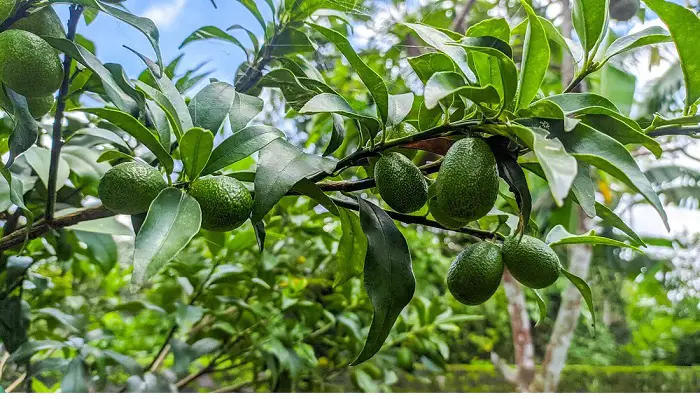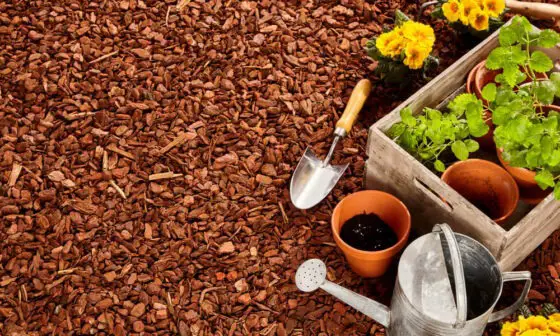
Gardening enthusiasts often seek unique and exotic plants to add to their collection, and what could be more rewarding than growing rare fruits right in your own backyard? Beyond the pleasure of tending to your garden, these plants offer the double reward of providing delicious, often hard-to-find fruits.
This article explores five rare fruit trees that are surprisingly adaptable to home gardens, including the versatile avocado tree, ensuring that even novice gardeners can embark on this fruitful journey.
These 5 Rare Fruit Trees Can Be Grown at Home
Avocado (Persea americana)
The avocado tree, with its lush, green foliage, is more than just an attractive plant; it’s a source of one of the most nutritionally complete fruits available. Originating in south-central Mexico, the avocado tree thrives in subtropical and tropical climates but can also adapt to greenhouse environments in cooler zones.
For successful cultivation, avocados require well-drained soil and plenty of sunlight. Although they can take several years to bear fruit, the wait is rewarded with rich, buttery avocados that are perfect for a variety of dishes. Gardeners should be prepared for a long-term commitment, as avocado trees can grow quite large and require patience before they start producing.
Dragon Fruit (Hylocereus undatus)
Dragon fruit, or pitaya, is as exotic in taste as it is in appearance. This cactus plant produces large, beautiful flowers that bloom at night and develop into the strikingly vibrant fruit known for its sweet and slightly tangy flavor. Ideal for warm, arid climates, dragon fruit vines need support to climb, making trellises or fences perfect structures for growth.
They prefer well-draining soil and moderate watering, with more frequent hydration during the flowering and fruiting seasons. The plant’s resilience against pests and diseases makes it a rewarding choice for those looking to add an exotic touch to their garden.
Pawpaw (Asimina triloba)
The pawpaw tree is a hidden gem of North American fruit trees, producing creamy, tropical-flavored fruits in a temperate climate. This understory tree is remarkably frost-tolerant and can thrive in a range of soil types, though it prefers moist, well-drained conditions. Pawpaws require cross-pollination, so planting two different varieties is recommended for fruit production.
Their large, droopy leaves provide a tropical aesthetic, and in the fall, they turn a striking shade of yellow. With its low maintenance and unique flavor profile, the pawpaw is an excellent choice for gardeners looking to grow something out of the ordinary.
White Sapote (Casimiroa edulis)
White sapote, often referred to as the ‘sleep sapote’ due to its mildly sedative properties, is a fruit tree that offers sweet, creamy fruits akin to a dessert in flavor. Native to central Mexico, it is well-suited to warm climates and can tolerate brief periods of cold.
The tree requires full sun and regular watering until established, after which it becomes remarkably drought-resistant. White sapote trees can grow quite large, providing ample shade and aesthetic value to any garden. Its fruits are versatile in culinary uses, from fresh eating to incorporation into smoothies and desserts.
Jaboticaba (Plinia cauliflora)
Jaboticaba is a unique fruit tree native to Brazil, notable for its peculiar habit of producing fruit directly on the trunk and large branches. This tropical tree requires a humid climate but can be grown in containers in cooler regions, offering flexibility for indoor/outdoor cultivation. Jaboticaba trees prefer acidic, well-drained soil and require regular watering to mimic their natural rainforest conditions.
The fruits, which resemble grapes in appearance and flavor, are highly prized for fresh eating, jams, and wines. Though slow-growing, the tree’s beautiful, glossy green foliage and unusual fruiting habit make it a fascinating addition to any garden.
Each of these rare fruit trees brings its own set of requirements, benefits, and unique flavors to the garden. By understanding and catering to their specific needs, gardeners can enjoy a diverse and fruitful harvest right from their own backyard.
How to Take Care of These Trees
Here’s a detailed table on how to nurture these rare gems:
| Tree | Latin Name | Care Instructions | Pruning Time | Harvest Time |
|---|---|---|---|---|
| Avocado | Persea americana | Plant in well-draining soil, water regularly, full sun. Protect from frost. | Winter, before spring growth | Varies, typically 1-2 years after flowering |
| Dragon Fruit | Hylocereus undatus | Requires full sun, moderate watering, and well-draining soil. Climbing support. | After fruiting | Summer through fall |
| Pawpaw | Asimina triloba | Prefers well-drained, fertile soil, partial to full sun. Minimal pruning required. | Late winter | Late summer to early fall |
| White Sapote | Casimiroa edulis | Loves sunny spots, regular watering until established, then drought-tolerant. | Late winter | Fall through spring |
| Jaboticaba | Plinia cauliflora | Prefers acidic, well-drained soil, frequent watering, and full to partial sun. | After harvesting | Several times a year, 3-4 years after planting |
Additional Tips to Consider
When venturing into the cultivation of rare fruits, consider your local climate and the specific needs of each plant. Some may require cross-pollination to bear fruit, so planting more than one tree could be beneficial.
Organic pest management and patience are key, as these trees can take a few years to start producing. Remember, gardening is a labor of love and experimentation; don’t be afraid to try different techniques to see what works best in your garden.
Final Words
Growing rare fruits in your garden is a rewarding challenge that can yield delicious rewards.
These unique trees not only beautify your space but also provide the satisfaction of harvesting your own, often exotic, fruits. Good luck!



